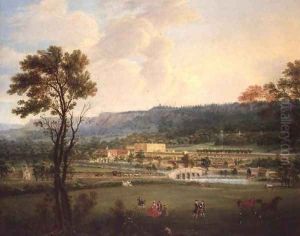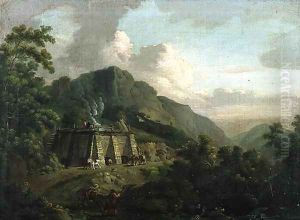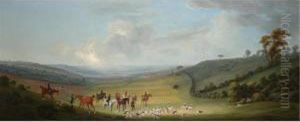Thomas Smith of Derby Paintings
Thomas Smith of Derby was an 18th-century English landscape painter, who is somewhat enigmatic due to the commonality of his name, making it difficult to ascertain detailed aspects of his life and career. Born in 1720, Smith is often distinguished from others by the moniker 'of Derby' to highlight his association with the town. While specific details about his early life and training are sparse, it is evident from his works that he had a profound understanding of landscape painting, which was a burgeoning genre in England during his lifetime.
Smith's painting style is characterized by its dramatic use of light and shadow, a technique that suggests he was influenced by the works of the Dutch masters, as well as by the burgeoning Romantic movement. His landscapes often feature dramatic English countryside scenes, with an emphasis on atmospheric effects and the sublime aspects of nature. He was known for his ability to capture the changing moods of the natural landscape, making his works highly prized among collectors of English art.
Throughout his career, Thomas Smith exhibited a number of his works, although records of specific exhibitions are scarce. His paintings were, however, well-received by his contemporaries, and he managed to gain a modest level of success and recognition during his lifetime. Smith's works are a testament to the growing appreciation for landscape art in England during the 18th century, and he is considered an important figure in the development of the English landscape painting tradition.
Despite his contributions to the art world, Thomas Smith of Derby remains a relatively obscure figure, with many details of his life and career still shrouded in mystery. He passed away in 1767, leaving behind a body of work that continues to be studied and appreciated by art historians and collectors. His legacy lies in his ability to capture the essence of the English landscape, contributing to the broader evolution of landscape painting in Europe.









